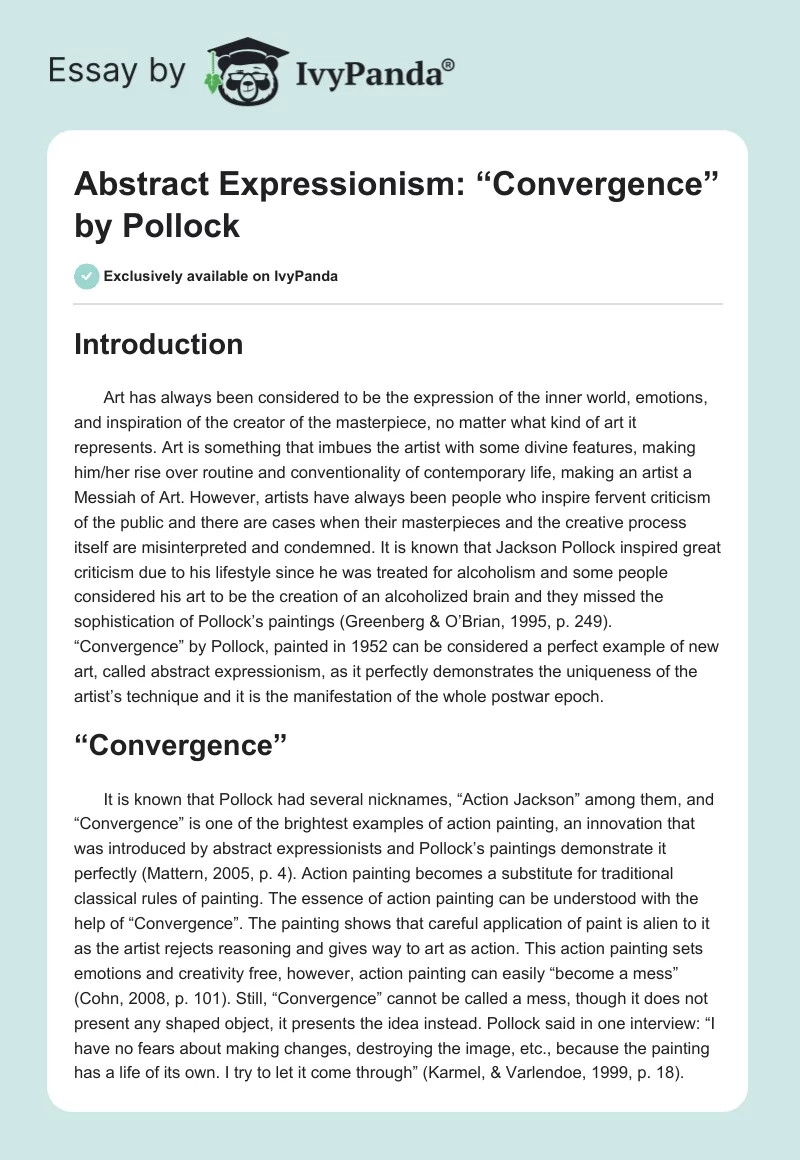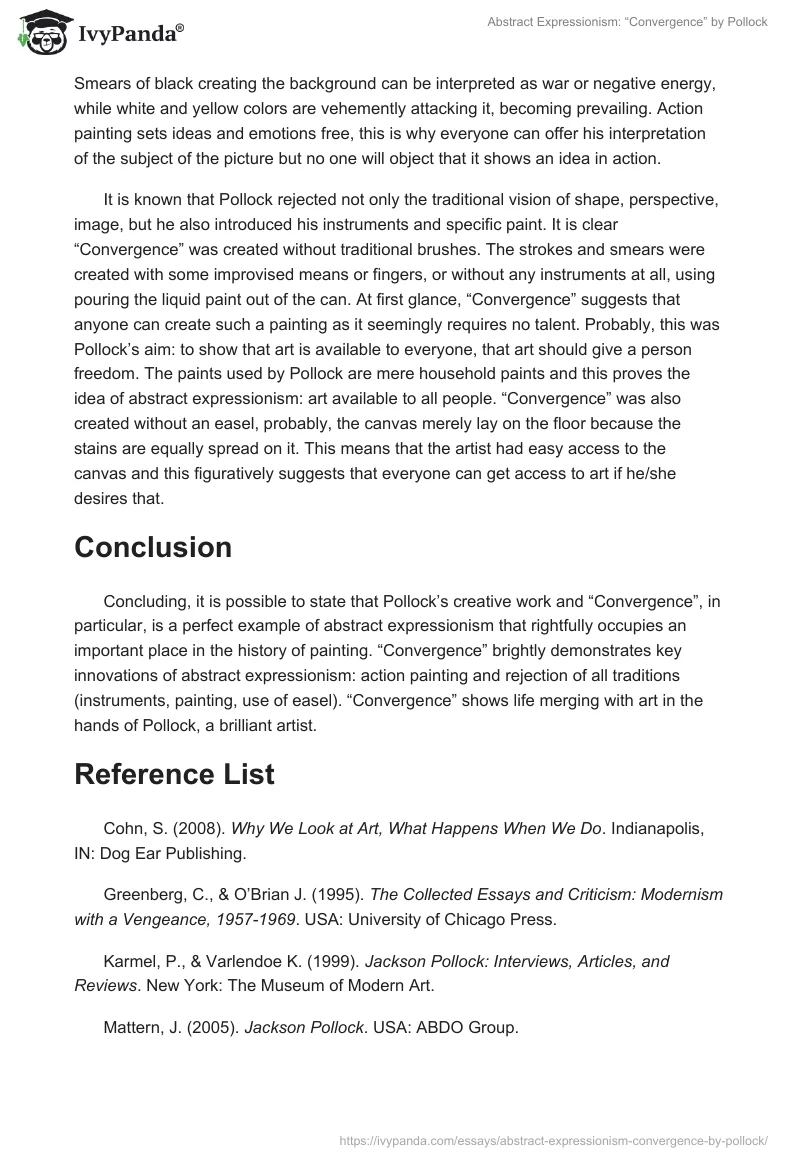Introduction
Art has always been considered to be the expression of the inner world, emotions, and inspiration of the creator of the masterpiece, no matter what kind of art it represents. Art is something that imbues the artist with some divine features, making him/her rise over routine and conventionality of contemporary life, making an artist a Messiah of Art. However, artists have always been people who inspire fervent criticism of the public and there are cases when their masterpieces and the creative process itself are misinterpreted and condemned. It is known that Jackson Pollock inspired great criticism due to his lifestyle since he was treated for alcoholism and some people considered his art to be the creation of an alcoholized brain and they missed the sophistication of Pollock’s paintings (Greenberg & O’Brian, 1995, p. 249). “Convergence” by Pollock, painted in 1952 can be considered a perfect example of new art, called abstract expressionism, as it perfectly demonstrates the uniqueness of the artist’s technique and it is the manifestation of the whole postwar epoch.
“Convergence”
It is known that Pollock had several nicknames, “Action Jackson” among them, and “Convergence” is one of the brightest examples of action painting, an innovation that was introduced by abstract expressionists and Pollock’s paintings demonstrate it perfectly (Mattern, 2005, p. 4). Action painting becomes a substitute for traditional classical rules of painting. The essence of action painting can be understood with the help of “Convergence”. The painting shows that careful application of paint is alien to it as the artist rejects reasoning and gives way to art as action. This action painting sets emotions and creativity free, however, action painting can easily “become a mess” (Cohn, 2008, p. 101). Still, “Convergence” cannot be called a mess, though it does not present any shaped object, it presents the idea instead. Pollock said in one interview: “I have no fears about making changes, destroying the image, etc., because the painting has a life of its own. I try to let it come through” (Karmel, & Varlendoe, 1999, p. 18). Smears of black creating the background can be interpreted as war or negative energy, while white and yellow colors are vehemently attacking it, becoming prevailing. Action painting sets ideas and emotions free, this is why everyone can offer his interpretation of the subject of the picture but no one will object that it shows an idea in action.
It is known that Pollock rejected not only the traditional vision of shape, perspective, image, but he also introduced his instruments and specific paint. It is clear “Convergence” was created without traditional brushes. The strokes and smears were created with some improvised means or fingers, or without any instruments at all, using pouring the liquid paint out of the can. At first glance, “Convergence” suggests that anyone can create such a painting as it seemingly requires no talent. Probably, this was Pollock’s aim: to show that art is available to everyone, that art should give a person freedom. The paints used by Pollock are mere household paints and this proves the idea of abstract expressionism: art available to all people. “Convergence” was also created without an easel, probably, the canvas merely lay on the floor because the stains are equally spread on it. This means that the artist had easy access to the canvas and this figuratively suggests that everyone can get access to art if he/she desires that.
Conclusion
Concluding, it is possible to state that Pollock’s creative work and “Convergence”, in particular, is a perfect example of abstract expressionism that rightfully occupies an important place in the history of painting. “Convergence” brightly demonstrates key innovations of abstract expressionism: action painting and rejection of all traditions (instruments, painting, use of easel). “Convergence” shows life merging with art in the hands of Pollock, a brilliant artist.
Reference List
Cohn, S. (2008). Why We Look at Art, What Happens When We Do. Indianapolis, IN: Dog Ear Publishing.
Greenberg, C., & O’Brian J. (1995). The Collected Essays and Criticism: Modernism with a Vengeance, 1957-1969. USA: University of Chicago Press.
Karmel, P., & Varlendoe K. (1999). Jackson Pollock: Interviews, Articles, and Reviews. New York: The Museum of Modern Art.
Mattern, J. (2005). Jackson Pollock. USA: ABDO Group.


